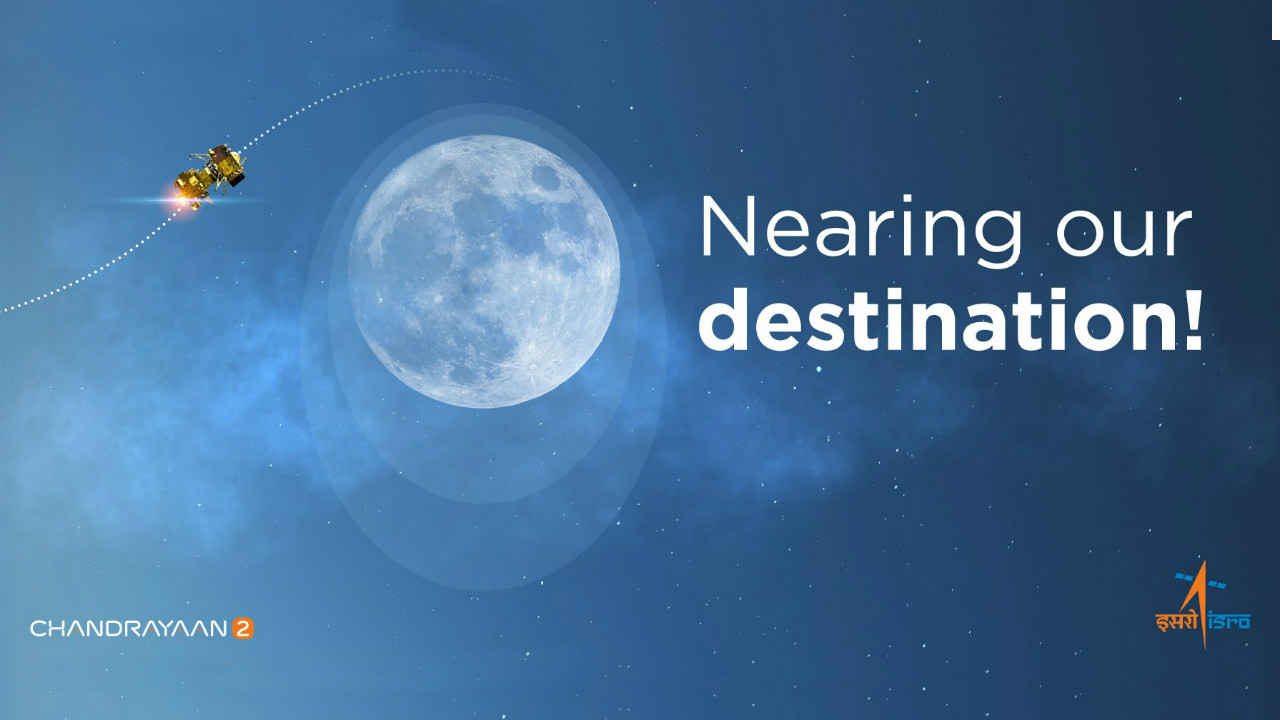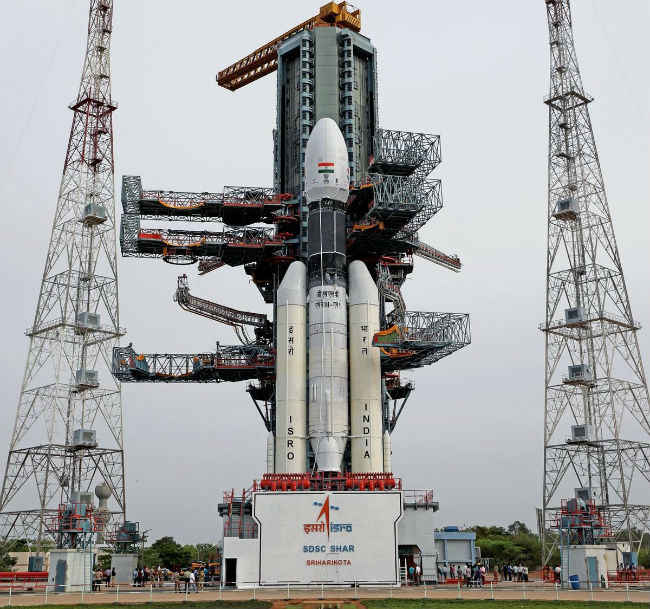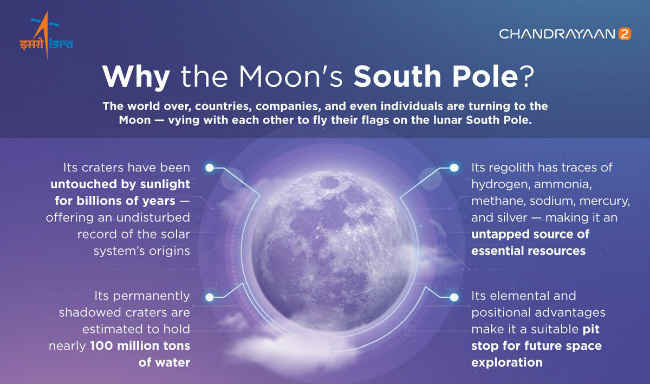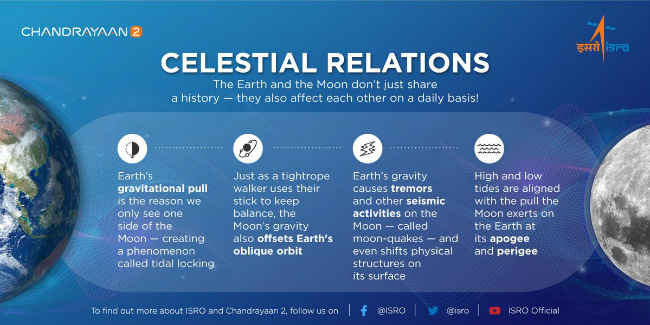Chandrayaan 2: ISRO explains why nations want to study Moon’s South Pole
The ISRO just tweeted out a few images from Chandrayaan 2's journey across the stars
The spacecraft sent back images of various craters on the surface of the Moon
Chandrayaan 2 will land on the Moon's surface on September 7

Update 2: Chadrayaan-2 has sent back a few more images of the Moon’s craters on August 26. These images were posted on the official Indian Space Research Organisation's website. Chandrayaan 2 captured images of the Somerfeld, Kirkwood, Jackson, Mach, Korolev, Mitra, Plaskett, Rozhdestvenskiy and Hermite craters.
 Survey
SurveyLunar surface imaged by Terrain Mapping Camera-2(TMC-2) of #Chandrayaan2 on August 23 at an altitude of about 4375 km showing craters such as Jackson, Mach, Korolev and Mitra (In the name of Prof. Sisir Kumar Mitra)
For more images please visit https://t.co/ElNS4qIBvh pic.twitter.com/T31bFh102v
— ISRO (@isro) 26 August 2019
Update 1: Chandrayaan 2 sends first image of the Moon from space. The image, taken at a height of about 2650 km from Lunar surface on August 21, shows Mare Orientale basin and Apollo craters. (Read Here)
Take a look at the first Moon image captured by #Chandrayaan2 #VikramLander taken at a height of about 2650 km from Lunar surface on August 21, 2019.
Mare Orientale basin and Apollo craters are identified in the picture.#ISRO pic.twitter.com/ZEoLnSlATQ
— ISRO (@isro) 22 August 2019
Earlier this week, the Chandrayaan-2 spacecraft completed the Lunar Orbit Insertion, a spaceflight operation of adjusting the spacecraft’s momentum to allow its entry into a stable orbit around the moon. As Indian Space Research Organisation (ISRO) heaved a sigh of relief after the insertion of the Chandrayaan-2 into moon’s orbit, people around the globe celebrated the completion of the coveted space mission’s second phase. But little do people know about why scientists on Earth are so keenly interested in exploring the South Pole of the moon. In this article, we’ll talk about the importance of this mission and how Indian scientists will use the technology to open the gates for space exploration.
What equipment is being used?
Chandrayaan-2 was launched on July 22 on the Indian space agency’s tried and tested Geosynchronous Satellite Launch Vehicle Mark III (GSLV Mk-III). The GSLV Mk-III, which is nicknamed “Baahubali” or Fat Boy, is a 640 tonne rocket. This was the rocket’s third mission and it is also India's heaviest launcher. Chandrayaan-2 is carrying Vikram, a 1.4 tonne lander, which houses Pragyan, a 27Kg Rover, to a plain between two craters at the moon's South Pole. All these components are stacked together in a composite structure and are interfaced mechanically. When Chandrayaan-2 reaches the lunar orbit, the lander, with the rover inside it, will decouple itself from the orbiter and make its way to the lunar surface.

If all goes well, Chandrayaan-2 will make a soft-landing on September 7, but in a recent interview, ISRO Chairman K Sivan termed the soft-landing as “15 terrifying minutes”, suggesting that the manoeuvre is a complex and unprecedented one. If India succeeds at a soft-landing on the moon's surface, it would become the fourth country in the world to do so. Till now, only the US, Russia, and China have achieved this feat. Israel, which tried earlier this year, failed at their attempt.
Why South Pole?
Vikram will land at a site which is 71 degrees south of Moon's equator and 32.8 degrees east. It will be between two craters: Manzinus C and Simpelius N on the South Pole. These craters have been untouched by sunlight for billions of years, which means that these craters are cold and expected to contain fossils of the early Solar System. They could provide important information that would help astronomers unlock the key in solving the question of how our solar system was formed.
Another reason is water. Since water is as necessary as Oxygen for human beings, ISRO believes that the Lunar South Pole holds nearly 100 million tons of water. Since the South Pole of the moon has permanently shadowed craters, the water here is in the form of ice. Apart from water, other minerals are also believed to present there.

Moon’s regolith, which is the layer of unconsolidated solid material that is covering its bedrock, has traces of hydrogen, ammonia, methane, sodium, mercury and silver that makes the South Pole an untapped source of essential resources. Sivan had said that ISRO’s mission will give vital inputs about the South Pole and help future moon programmes of India.
The fourth reason is that the elemental and positional advantages of the moon make it a suitable pit stop for future space exploration. In fact, US space agency NASA has already announced its plan to set up a human habitat in the South Pole and is awaiting Chandrayaan-2’s inputs to study the area.
Where is Chandrayaan 2?
The Chandrayaan-2 has already entered the lunar orbit, which means it is now revolving around the moon. ISRO has already performed the second lunar-bound orbit maneuver for Chandrayaan-2. The orbit achieved is 118 km x 4,412 km, which means that the spacecraft has been injected into an elliptical orbit which is 118 km away from the moon’s surface at its nearest point and 4,412 km at its furthest. The Indian space agency will perform the next orbit maneuver on August 28 between 0530 – 0630 hrs IST.
What next?
It’s a tough road from now on. The spacecraft will reduce its orbit with the help of several minor manoeuvres done by selective and timely burning of its engine thrusters. ISRO will perform five more manoeuvres till September 1, with some of the major ones scheduled for August 30 and on September 1. At the end of this, the spacecraft will be placed in a circular orbit which will be 100 kms above the Moon’s surface.
In the next phase, Vikram lander will separate from the orbiting spacecraft to begin its five-day descent to the lunar surface. “The focus of our concern will then shift to the lander rather than the orbiter,” said Sivan. During this journey, the lander will be in a free-fall and will not be managed by the ground control. “This is a learning from the earlier attempts of soft landing on the Moon, only 37 percent of which have been successful,” said Sivan. The lander Vikram houses six-wheeled rover Pragyaan that will explore the lunar surface.
On September 3, ISRO will perform a small de-orbit manoeuvre of the lander, which will last three seconds, to ensure that all the onboard systems are working properly. On September 4, the lander will reduce its orbit to 97 km x 35 km and all the systems will be self-checked for the subsequent three days.

Final descent and “15 minutes of terror”
On September 7 at 1:40 am, ISRO scientists will be on on their toes to make a ‘soft landing’ of the lander on the lunar surface. The lander will start capturing images of the Moon with its onboard camera and compare it with the images that has been fed into the systems from Earth. This will be done to ascertain the exact landing spot. The landing area needs to have an inclination of less than 12 degrees. This will make sure that the craft doesn’t topple when it lands on the surface.
Once the identification is done, Vikram will use its four thrusters and the central engine to attempt the soft landing on the Moon. After 15 minutes of a powered descent, at 1:55 am, Vikram will land on the Moon. What’s important here is that the orbit of the lander in this entire duration has to be perpendicular to the lunar surface. Every correction done in the orbit of Vikram will use fuel, which will deplete the stock. However, the lander is carrying 60-70 kgs of extra fuel if situation goes south.
Two hours after landing, that is at around 3:55 am, Vikram will open its gates for Pragyaan rover, which will “ramp walk” to touch the surface of the moon. About an hour later, Pragyaan will deploy its solar panels to power the systems onboard the rover. The rover will then move around the surface of the moon for one lunar day, which is equivalent to two weeks on Earth.
There’s one thing we can’t measure here though — the hopes and dreams of millions of Indians riding on #Chandrayaan2! #ISRO #MoonMission pic.twitter.com/8LGFuf4Lfy
— ISRO (@isro) 16 August 2019
Sourabh Kulesh
A journalist at heart; has knowledge of a wide gamut of topics related to enterprise and consumer tech. View Full Profile